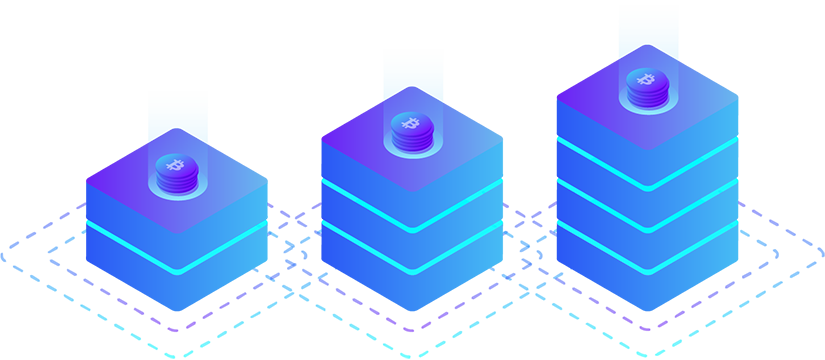
Why Cardano Struggles as a Powerful Blockchain Protocol
Cardano may not live up to its promise as a powerful blockchain protocol
Cardano (ADA) has been widely promoted as a third-generation blockchain that promises scalability, interoperability, and sustainability.
Built on peer reviewed academic research and formal methods, its technical vision is ambitious. However, many industry professionals argue that Cardano falls short in real world performance, ease of use, and validator experience.
Below, we’ll examine the key reasons why Cardano may not live up to its promise as a powerful blockchain protocol.
https://cardano.org/
Setting up a Cardano node is significantly more complex than in other networks like Ethereum, Solana, or Cosmos.
- Manual Configuration Overload: Unlike more user friendly ecosystems with streamlined installers or Docker support, Cardano requires multiple dependencies, manual builds from source, and custom configuration files (e.g.,
mainnet-config.json,topology.json,db-sync, etc.). - Non-intuitive Setup: Tools like
cardano-node,cardano-cli, andcardano-db-synchave poor documentation and require in-depth Haskell knowledge for advanced features. - Resource Heavy: Cardano’s full nodes are storage and CPU-intensive, with sync times that can take hours to days. There’s also no light client or pruning mechanism that’s truly decentralized.
This high barrier to entry makes validator participation inaccessible for everyday users or smaller operators.
Unlike Ethereum or Cosmos, Cardano uses a stake pool operator (SPO) model with very limited validator functionality:
- No Slashing: Misbehaving validators are not slashed. There are almost no direct penalties for downtime or poor behavior, which weakens the incentive for validator performance.
- Low Validator Flexibility: SPOs have limited influence beyond block production. They don’t run smart contract logic or app specific infrastructure like in other ecosystems (e.g., Cosmos appchains or Ethereum L2s).
- Poor Incentive Alignment: Delegators mostly follow pool rankings rather than true performance, and with over 3,000 pools, centralization and underperformance are common.
The network lacks the robust validator incentives that underpin high-performance protocols.
Cardano’s smart contract platform, Plutus, is based on Haskell , a functional programming language not widely used in the blockchain industry.
- Steep Learning Curve: Haskell is powerful but obscure. Most developers are more familiar with Solidity, Rust, or Move.
- Useless Complexity: Plutus’ off-chain and on-chain split introduces friction, requiring two parallel codebases and complex serialization steps.
- Low Throughput: Because of the extended UTxO model and concurrency limitations, Cardano can only process a handful of smart contracts per block, severely limiting composability and DeFi scalability.
The smart contract ecosystem on Cardano is tiny and underdeveloped compared to competitors like Ethereum, Solana, or even Avalanche.
Cardano’s governance roadmap is built around Project Catalyst and the upcoming Voltaire phase, promising on chain decision-making and treasury allocations. However:
- Slow Progress: Project Catalyst has seen frequent delays and controversy over its effectiveness and voter participation.
- Academic Paralysis: Changes require formal proposals and long review cycles, creating bottlenecks rather than agility.
- Governance by Design, Not Practice: Despite a complex governance structure, real impact on protocol direction remains slow and uncertain.
Decision making is too slow for fast-moving web3 environments.
Even after years of development, Cardano’s dApp ecosystem is small and struggling:
- Low TVL: As of mid-2025, Cardano has less than 1% of the total DeFi total value locked (TVL) across blockchains.
- Few Notable dApps: While there are a handful of active DeFi and NFT projects, they lack usage or composability due to infrastructure limits.
- Poor Developer Experience: The lack of SDKs, libraries, and community tooling makes Cardano unattractive to builders.
Network effects are weak, and few developers build on Cardano by choice.
Strength in Theory, Weakness in Practice
| Feature | Cardano (Current State) | Competitive Networks (Ethereum, Solana, Cosmos) |
|---|---|---|
| Validator Incentives | Weak, no slashing, low power | Strong, with economic alignment and slashing |
| Node Setup | Complex, poorly documented | Simplified with containers and better UX |
| Smart Contracts | Haskell/Plutus, low throughput | Solidity, Rust, Move – with robust tooling |
| Governance | Academic, slow | Agile and community-driven |
| Ecosystem & DeFi | Minimal, limited UX | Vibrant, interoperable, and capital-rich |
Cardano is a protocol built with an academic mindset, careful, rigorous, and slow. While this ensures certain types of correctness and formalism, it has also made the network less competitive in practice.
From validator incentives and developer tooling to real world scalability and smart contract usability, Cardano has consistently underdelivered compared to more agile, modular, and performant chains.
Until it simplifies node operations, modernizes its development stack, and offers real-world advantages in throughput or user experience, Cardano risks falling further behind in a rapidly evolving blockchain landscape.
